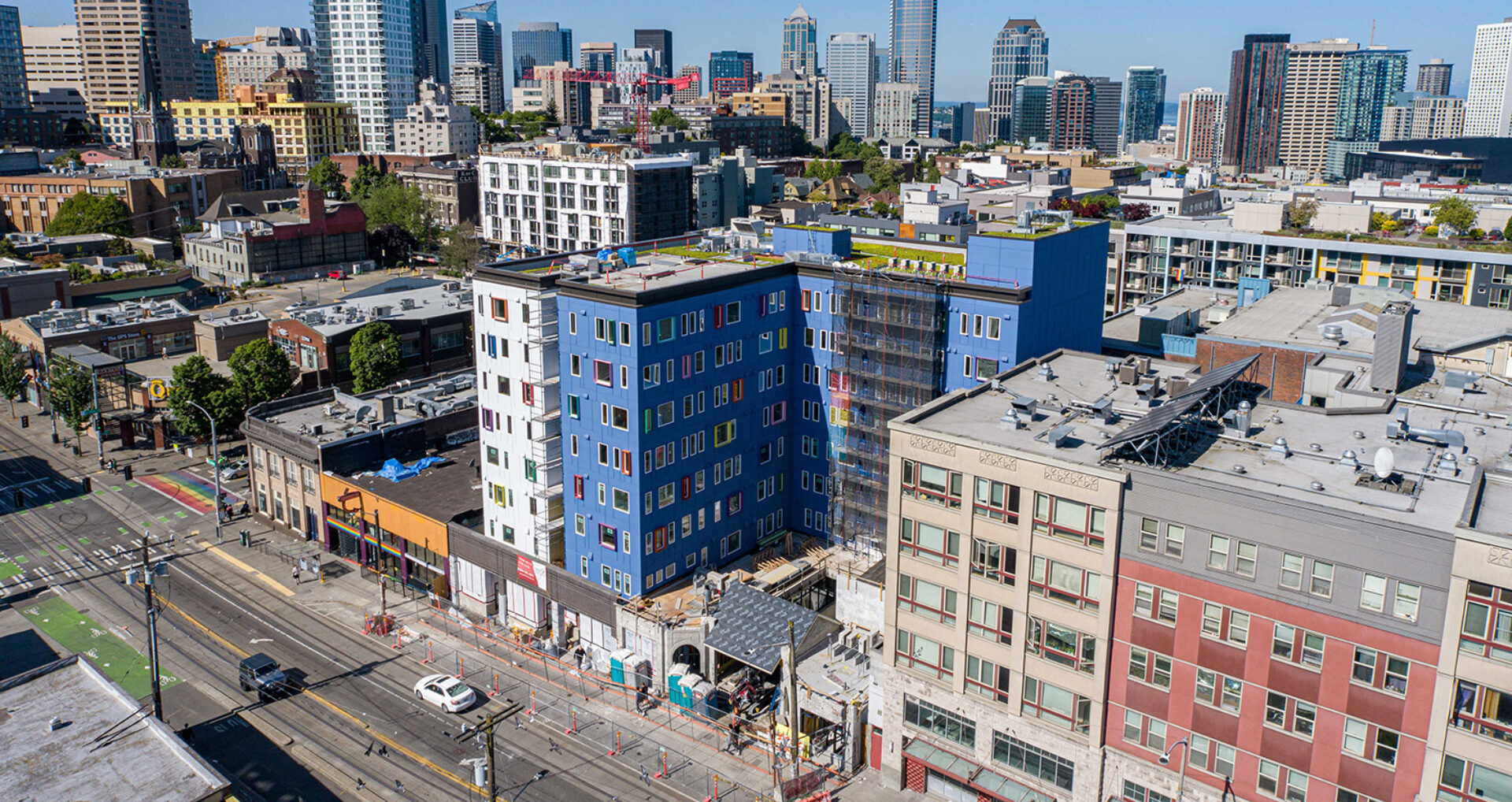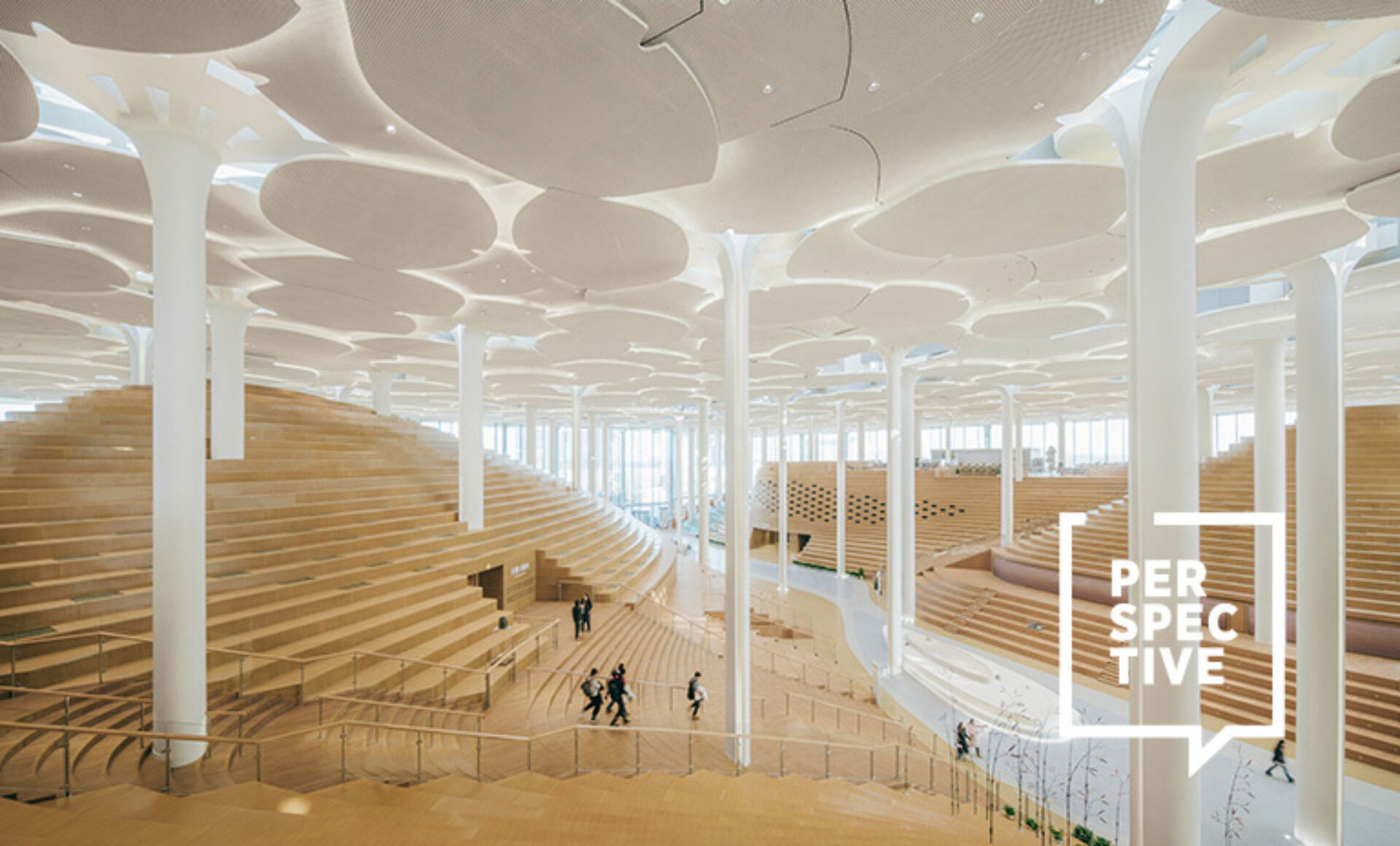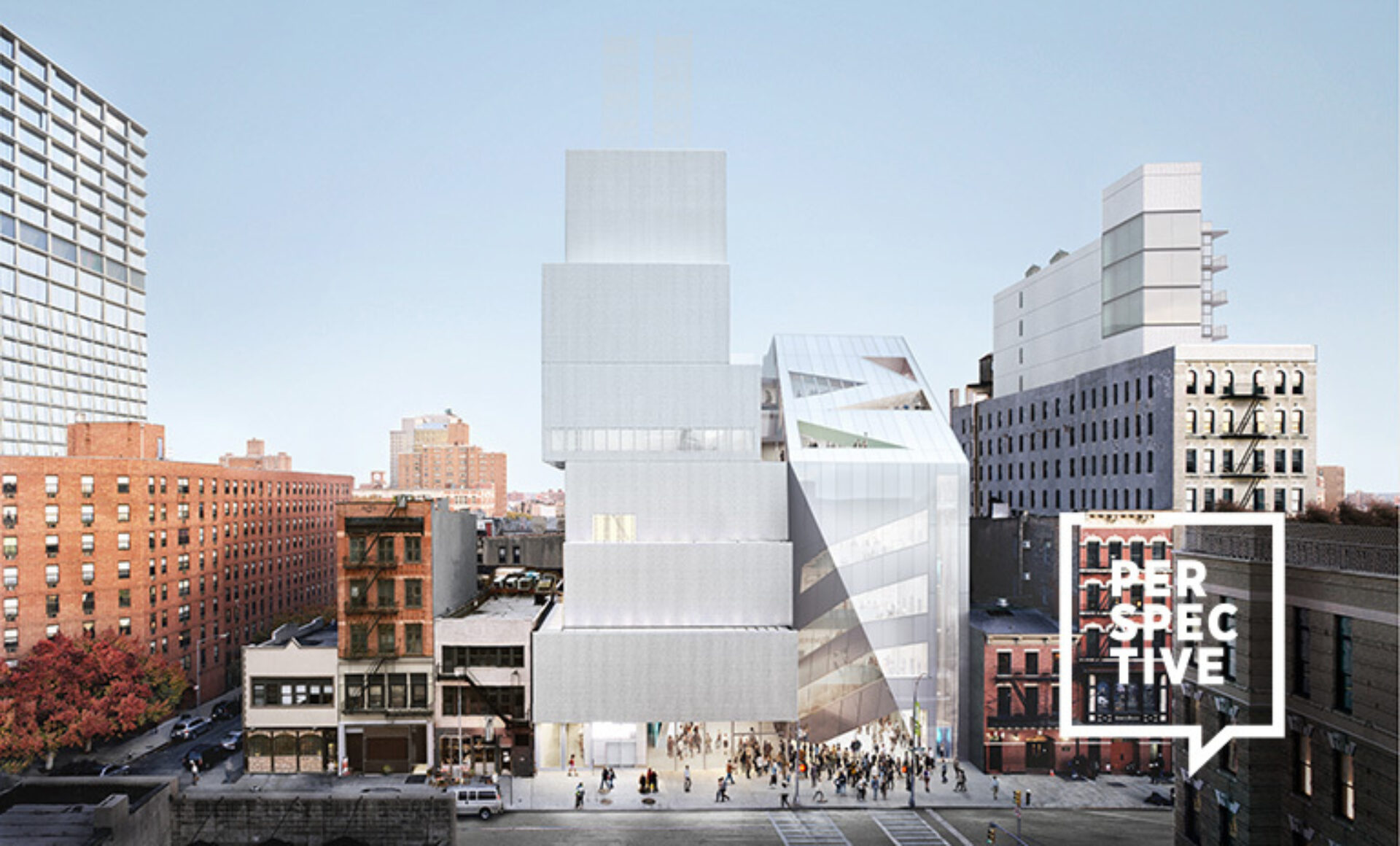IIDA’s annual Pride Month series provides an insider’s look into Seattle-based Pride Place—the state's first LGBTQ senior housing community offering affordable, affirming housing currently accepting applications and set to officially open in the fall. Pride Place features studios and one-bedroom apartments as well as extensive amenities in partnership with GenPride, a nonprofit organization advocating for the unique needs of older LGBTQ adults through programs and services that promote well-being, prevent social isolation, and cultivate belonging through community connection. Importantly, they strive to eliminate discrimination.
There are over 2.4 million LGBTQ adults over age 50 in the United States—a number expected to double by 2030 to over 5 million, according to Movement Advancement Project (MAP). Securing senior housing is now more important than ever but it’s a rather complicated process particularly considering that these individuals have greater health and mental health disparities compared to the general population. One contributing factor may be that they are more likely to delay or not seek medical care due to fear or past discrimination and lack of cultural competency in medical care. Based on “Dignity 2022: The Experience of LGBTQ Older Adults,” a national survey of LGBTQ individuals aged 50+ conducted by AARP, a nonprofit, nonpartisan organization that empowers retired people to choose how they live as they age, many (eight out of 10) worry about who will take care of them as they age as they may be dependent on their peers for support— friends who are also aging. 52% feel socially isolated, and 86% worry about discrimination based on sexual orientation or identity.
Enter: Pride Place. Located in Capitol Hill, Seattle’s historically gay neighborhood, it offers much-needed affordable housing for seniors—a life-changing experience and a big step forward for the community as a whole. Emma Johnston, architectural associate at Environmental Works, the firm behind Pride Place, discusses the rise of retirement communities and cities serving LGBTQ populations, the parameters that need to be taken into consideration when designing for the LGBTQIA+ community, and design’s power to change the world for the better.

Pride Place is the state's first LGBTQ senior housing community. What sets it apart?
The visual design of Pride Place pays homage to the queer identity. It features different-sized windows that do not repeat in a regular pattern to symbolize that the LGBTQ community proudly breaks traditions to forge their own path and identity. The extruded aluminum window boxes are colored in the Pride Flag and Trans Pride Flag colors to acknowledge the diversity of the community.
Pride Place is not just a housing complex but a center for the queer senior community. The project has both indoor and outdoor resident community space, while the non-profit GenPride manages a LGBTQ senior center and small clinic on the ground floor. We wanted Pride Place to be an identity-affirming space, so it only makes sense to include services that fit the needs of the queer community. As the first LGBTQ identity-affirming senior housing in Washington, Pride Place goes beyond being simply apartments to being a landmark and symbol of a proud community.
Can you talk about the LGBTQ community’s ever-evolving needs, unique set of challenges, and health disparities and the ways they shift with aging?
Aging can be an often isolating experience. It’s harder to make friends and access the community while simultaneously managing the increased health concerns that come with aging. Further, the LGBTQ community can face discrimination in every aspect of their lives. At this intersection of aging and being a part of the queer community, it can feel overwhelming to seek medical care, mental health care, relationship counseling, or community companionship in the face of discrimination. Including services like the clinic and the GenPride community center—while emphasizing them as “identity-affirming”— removes that fear as a barrier to entry and ensures these services actually have experience with queer issues. All of these services existing in the same location as housing reduce the transportation and accessibility burdens that disproportionately affect senior citizens.
Another central aspect of the queer community is the emphasis on community. Many LGBTQ identifying people experience scorn and discrimination from their own family members which is why the concept of chosen family is so crucial to the queer identity. We designed so much resident-shared space and public space at Pride Place specifically to facilitate residents creating and expanding their chosen family.


How do you go about creating a safe, comfortable, and inclusive environment for seniors and their families while cultivating community from a design standpoint?
In addition to designing comfortable and accessible units, creating spaces for cultivating community was at the forefront of our minds while designing Pride Place. We made sure to carve out locations in the building for people to meet and spend time together. There is a resident amenity room on the second floor that leads onto a large outdoor patio lit with string lights. We partnered with GenPride to create a senior community space on the first floor of the building. GenPride will manage meal services and LGBTQ senior workshops in a large community room that opens up onto the building’s shared courtyard. This brings residents together with the larger LGBTQ senior community in shared spaces ranging from open to the public or for residents only.
What are the greatest challenges you had to face bringing this project to life?
There were a great number of unique challenges during the design and construction of Pride Place. When it comes to low-income housing, project budget is always a concern. You want to design for durability as much as for beauty. Balancing the needs of the community with rising material costs and project delays was a huge challenge, but we had a wonderful team of experienced contractors at Walsh Construction Company that kept a careful eye on the project, making sure we maximized efficiency. As an urban infill project in the heart of bustling Capitol Hill, we had to be very organized in our limited space. We wanted to keep disruptions to public transit and trolley services caused by construction to a minimum. We needed to have a good relationship with our neighbors on either side as our building fits snugly between them. In this project, we also took on the restoration and preservation of the historically designated Eldridge Tire Company building. The rebuilt porte-cochere connecting the two Eldridge storefronts is the new gateway into Pride Place, leading to its entry courtyard. We are restoring the stucco and clay tile roof to its former glory, while including new windows and tile detailing that connects this entrance to the larger building. Preserving the Eldridge Tire building makes Pride Place a project that embraces the history of Capitol Hill even as new buildings shape its future.
Where do you see change and opportunity and how do you ensure you don’t take any steps backward?
Pride Place is an example of how to responsibly build more housing to address the changing needs of our city. It was the LGBTQ community that was responsible for making Capitol Hill the trendy and vibrant cultural location it is today. Yet as the area became more popular, the cost of living skyrocketed. Pride Place seeks to redress the fact that this community that has been in the neighborhood for decades is being priced out of the community they built. The queer community deserves to age in place. Pride Place shows that we can increase housing density and build new construction without incurring the kind of gentrification that pushes people out of their historic neighborhoods. We won’t take steps backward as a city if we keep advocating for and funding subsidized identity-affirming projects like Pride Place.
Can design improve senior living?
Good design can absolutely improve senior living. Senior living often gets a bad reputation as a place to put seniors rather than the focus being on the needs and desires of the senior residents. Ultimately, seniors need what everyone needs to be happy: units that are clean, comfortable, and accessible, with plenty of natural light. They need privacy and a sense of safety while also feeling ownership over their space and a sense of individuality. We achieved all of this at Pride Place, as well as other design decisions that help senior groups specifically, particularly access to public space and community services. Additionally, filtered air in each unit means better indoor air quality than many apartments while ceiling fans are provided to help keep residents cool.






